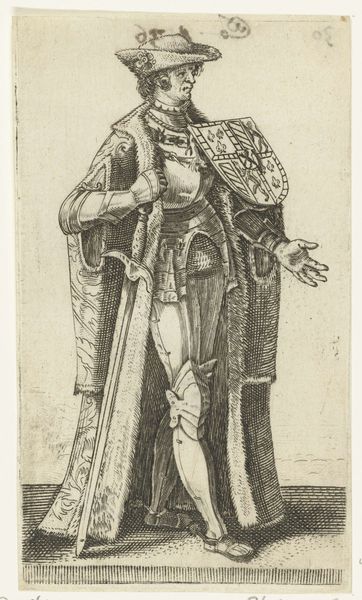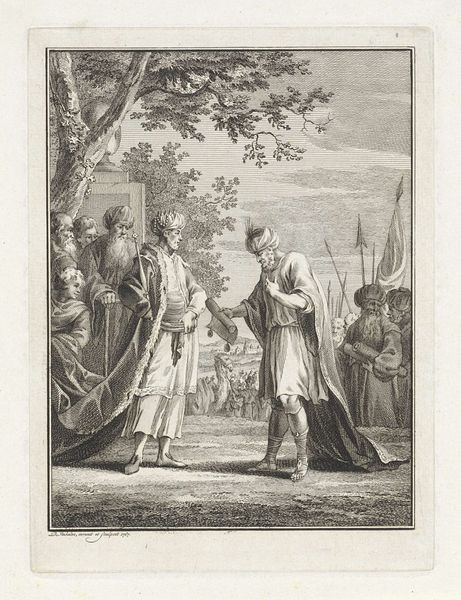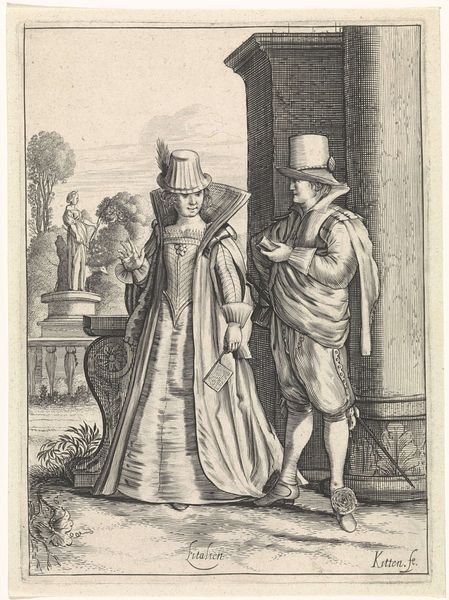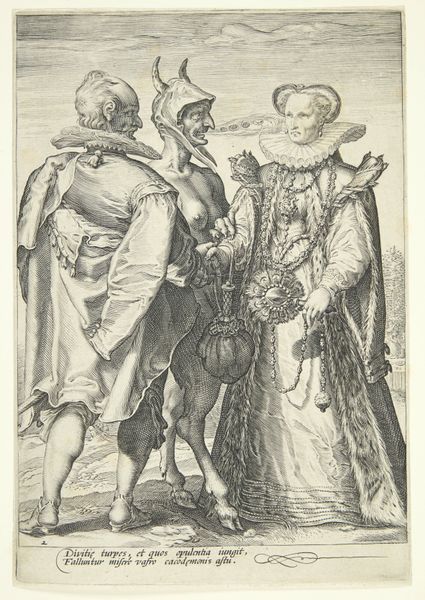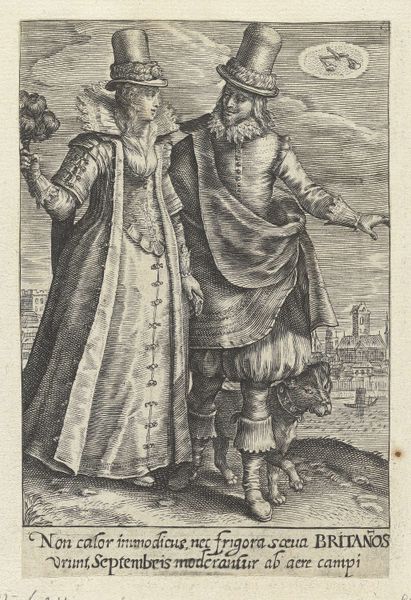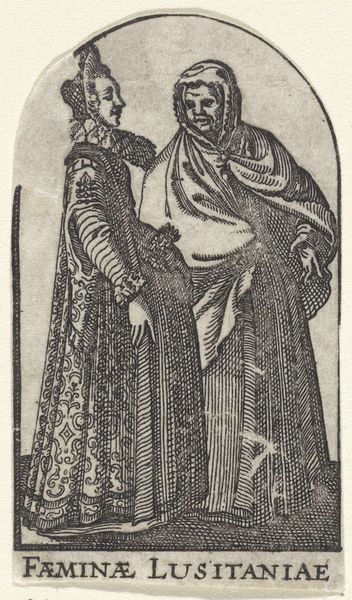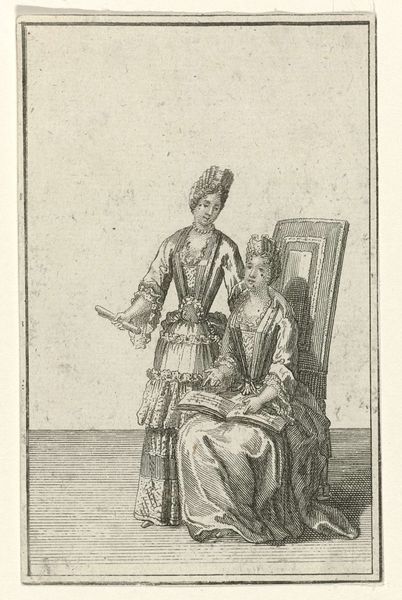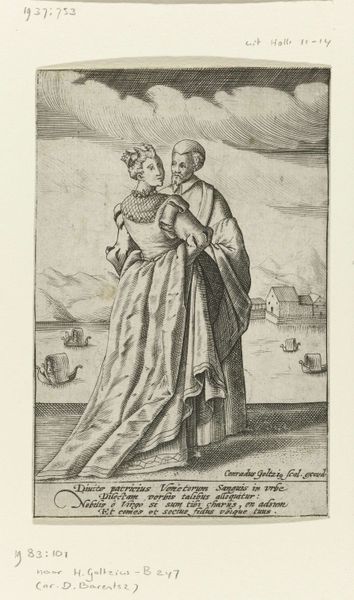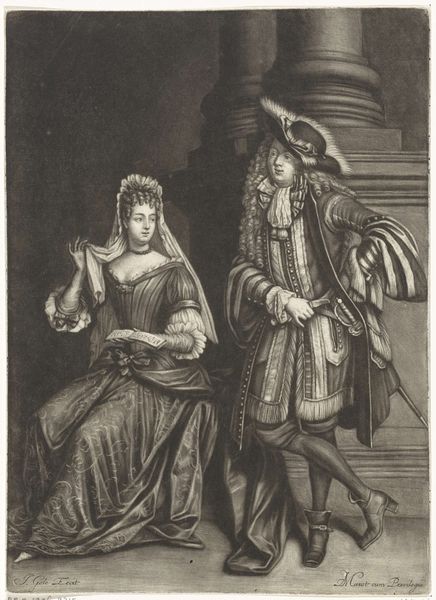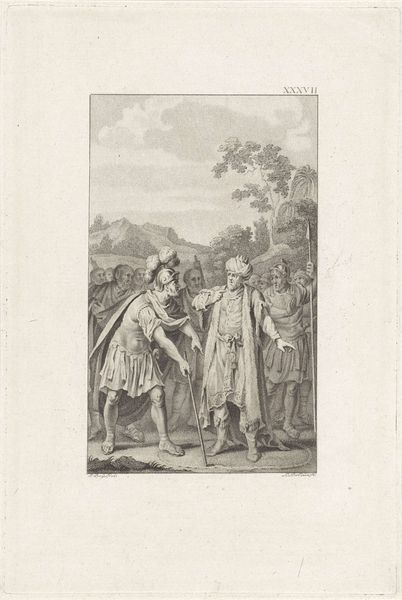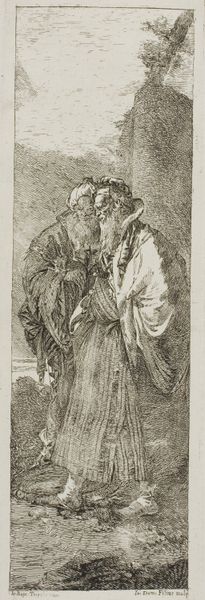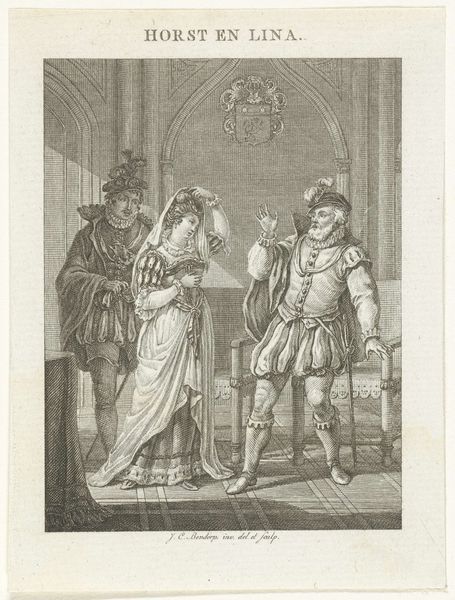
engraving
#
portrait
#
baroque
#
old engraving style
#
caricature
#
portrait drawing
#
history-painting
#
engraving
Dimensions: height 263 mm, width 158 mm
Copyright: Rijks Museum: Open Domain
Curator: Well, isn’t this intriguing! At first glance, there's an almost theatrical quality to this engraving. The figures, Jacobus Zonzalus and Donatus, they seem...elevated, like characters stepped out of a play. A bit intense! Editor: This engraving, created by Romeyn de Hooghe around 1701, certainly aims for theatrical gravitas. Note how De Hooghe positions the subjects and employs elaborate costuming to assert their prominence. The Baroque influence is visible in the drama and detail he meticulously etched into the plate. Curator: Baroque for sure! All that fabric, plus the dramatic sky and gathering crowd in the background gives this an 'end of times' feeling. Speaking of the clothing – that's a costume choice with a story behind it, right? Why dress them like this? Editor: Exactly. The garb deliberately invokes associations with Ottoman dignitaries. De Hooghe used such depictions to offer political commentary during a time when the Ottoman Empire posed a significant geopolitical force. He’s subtly placing these figures within a complex web of power, trade, and religious conflict. The robes might signify the sitter's status within overseas trading or diplomatic missions, too. Curator: That really shifts my reading! It's easy to miss how politically loaded these images can be, especially with this kind of…well, maybe 'primitive' isn’t the right word. But the engraving has a naivete that contrasts with the sophisticated message behind it. And what about the caricatured feel in those portraits? Almost a slight mockery? Editor: Ah, you've touched on another crucial aspect of De Hooghe's style! His work often incorporated caricature to critique figures or events subtly. While the 'caricatured' aspect adds humor, its more potent use in art and publication served as social or political satire. The context, circulation, and contemporary readership of printed works during this period really amplified De Hooghe’s impact as a prominent propagandist. Curator: Propaganda—that's a much sharper way to put it. Suddenly, those robes and scrolls they’re holding read more like statements of ambition and purpose rather than mere portraits. Well, I'll walk away considering art history to be far more of an active voice of political movements than I have before. Editor: And for me, recognizing the sheer creative will imbued in historical prints, I'm reminded of their enduring relevance in conversations concerning historical events. It is exciting!
Comments
No comments
Be the first to comment and join the conversation on the ultimate creative platform.
